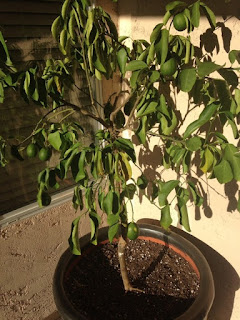Well, ask and you shall receive!
I have documented in previous articles about fall being the best time to plant trees and shrubs. So, pardon the pun, let's kill two birds with one stone. Plant something at the best time of year, thinking about our feathered friends!
This will certainly be a short list, especially considering the vast amount of possible plants and trees, different growing zones, time of the year you want to attract the birds, and not to mention the types of birds available in your area.
Being it is December after all, let's focus on how to attract birds to your winter garden.
The first being obvious,
Illex spp. (Hollies)
This winter classic is practically a necessity for bird lovers. Its beautiful green foliage supplies winter protection for our feathered friends and its bright berries are nourishing. The fruit form in the fall and persist through the winter, or until they are gobbled up. Keep in mind that it is the female bush that produces the berries. Ask your garden center which is which. Different species range from small bushes to 60-foot trees. Just to name a few birds that this will attract include: Robins, bluebirds, waxwings, as well as many others.
American Goldfinch on a Holly bush
Callicarpa americana (American Beautyberry)
Beautyberry is a real showstopper in autumn. The fall fruit lasts well into winter, or until the birds devour the last bunches of bright purple berries. American beautyberry is a fast growing native perennial shrub; growing five to eight feet tall and almost as wide with drooping branches. It is an important food source for many birds, such as bobwhite quail, robins, cardinals, finches, mockingbirds, thrashers and many other animals.
American Beautyberry (Callicarpa americana)
Pyracantha coccinea (Firethorn)
Cherished for its spectacular fall and winter display of scarlet, and other color fruits, with the ability to withstand dry and droughty conditions, this plant typically grows into a tangled mound up to 10 ft tall and 12 ft wide.
Firethorn is very fast growing and cultivars and hybrids are available that may be considerably more compact, however, they all have thorns, which to the birds is a great hiding place. A few birds attracted to this plant are Cedar waxwings, cardinals, and blue jays.
A Blackbird enjoying some Pyracantha Berries
Malus spp. (Crabapples)
Crabapples bloom in early to mid-spring, producing masses of pink, red, or white flowers, depending on the variety. Many types also produce small, red or yellow edible fruits that remain on the branches into fall and winter, providing food for wildlife, and the branch structures on many varieties provide interesting forms. This is a great tree to plant if you want any of the following in your yard, Robins, bluebirds, thrushes, catbirds, cardinals, waxwings, Pine Grosbeaks, and finches.
Soon to be lunch for some hungry birds
Quercus alba (White Oak)
White Oak grows from Maine to Minnesota southward to Florida and Texas. It is a large, stately tree that grows up to over 100 feet tall, and 38 to 50 inches in diameter. It flowers in the spring at about the same time leaves appear. Acorn maturity is reached approximately 120 days after pollination. This tree provides food for Woodpeckers, Bluejays, Wild Turkeys, grouse, and Wood Ducks.
White Oak with a nice crop of acorns
Juniperus virginiana (Eastern Red Cedar)
Eastern Red Cedar is a pioneer species, which means that it is one of the first trees to repopulate cleared, eroded, or otherwise damaged land. It is unusually long-lived with the potential to live over 900 years. It is an attractive cone-shaped tree, usually growing 50 to 90 feet tall. It has fleshy, pale blue, berry-like cones that are produced on female trees only. Even though they are not the first choice, when nothing else is around, these are the best thing going for everything from Eastern Bluebirds, waxwings, grosbeaks to wild turkeys, sharp-tailed grouse, and robins.
Cedar Waxwing in, of all things, a Cedar tree.
I will end this post with a plant that many consider a nuisance, though it is very important to many bird species.
Parthenocissus quinquefolia (Virginia Creeper)
A woody, deciduous vine, Virginia Creeper can be a high-climbing or trailing plant, anywhere from 3-40 ft in length. The flowers are small and greenish, produced in inconspicuous clusters in late spring, and mature in late summer or early fall into small hard purplish-black berries. These berries contain toxic amounts of oxalic acid and have been known to cause kidney damage and death to humans, the berries are not toxic to birds. Some of the feathery ones that rely on this plant include chickadees, nuthatches, mockingbirds, finches, flycatchers, tanagers, swallows, vireos, warblers, woodpeckers, and thrushes.
A buffet of Virginia Creeper berries, ready to be eaten
I hope this gives you some ideas of what to plant, should you want to attract more birds to your yard.
Not only are these creatures entertaining, they are useful for pest insect control and are the key in seed propagation for many native and non-native plants. Which could be good or bad, depending on the plant!
If you have any questions, comments or complaints about this or any of my other articles, please feel free to leave a comment or drop me a line to TheCitrusGuy@netzero.com
Happy Growing!
Darren
























































